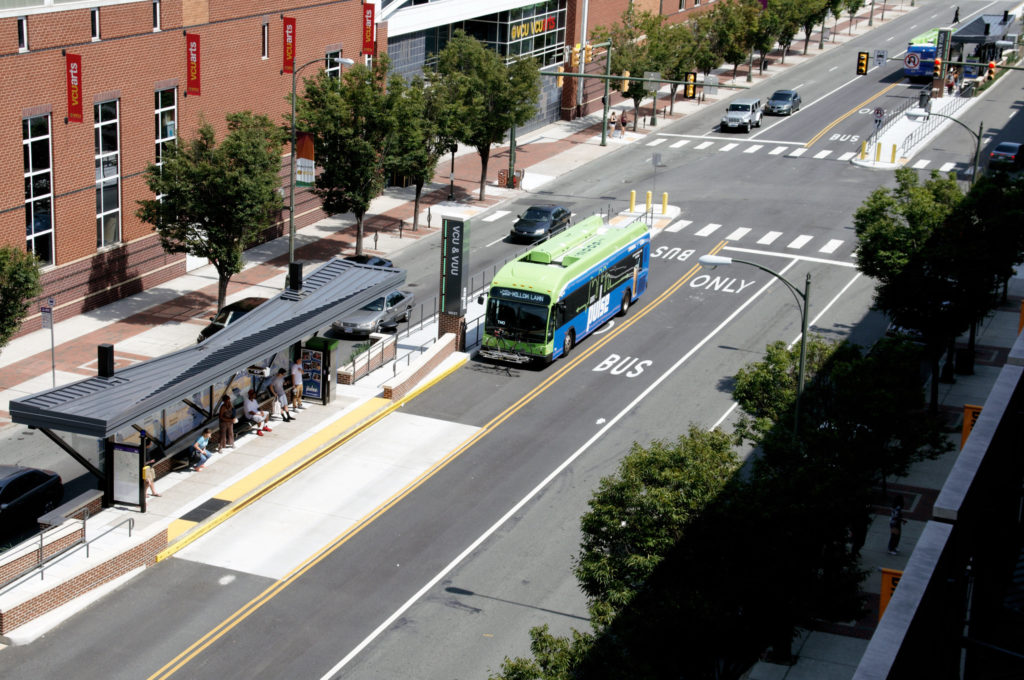If we’re going to ensure that the historic amount of transit funding in the infrastructure law actually results in good, usable, high quality transit that improves access to jobs and services, Congress is going to need to do a better job of oversight and thinking through the very real and difficult issues at hand for transit, not just arguing about whether or not transit is a vital part of transportation and mobility in communities small and large.

Nearly two weeks ago, Secretary Buttegieg testified before the Senate Committee on the Environment and Public Works. On paper, the purpose was to discuss implementation of the infrastructure bill. However they instead wasted much of the hearing arguing about a harmless Federal Highways Administration memo calling for investment in repair and safety projects, improving equity, and reducing emissions. One side didn’t like the existence of these priorities on a piece of paper while the other side tried to point out that these priorities are all clearly laid out in the bill (even if the bill does little to further them). There was no real conversation about implementation ideas or needs, and the very real challenges of spending this money in a way that improves the state of our country’s infrastructure and helps connect people to opportunity.
Unfortunately, that trend continued this week during a Senate Banking, Housing, and Urban Affairs Committee hearing about public transit and the infrastructure law.
While the majority showed a willingness to ignore bad faith arguments from the minority and certain invited guests about whether or not transit should even exist, they will need to do far more in the future to address very real concerns about ensuring that transit money get appropriated in a timely way, that USDOT advance new capital projects smoothly, how to handle very real workforce challenges in the transit industry, aligning transit investments with equitable transit-oriented development, and positioning transit to be a reliable and competitive mode for people to use within their community. In fact, the Federal Transit Administration is currently seeking input on their rules surrounding the Capital Investment Grants, like New Starts—a topic that would have been good to discuss.
Senator Sherrod Brown (D-OH) described the vital service that public transit provides in our communities, highlighting the example of a worker spending a day’s wage on Uber or Lyft to get to/from work on a Sunday to keep their job, because there isn’t any transit service. The Senator painted a clear picture why transit needs more investment to improve the experience of existing transit riders and make the service viable for millions of new riders, connecting this need to the current pain of high gas prices, saying “if people had reliable public transportation then they don’t need to decide between gas and rent.”
Senator Brown during the hearing
Unfortunately, ranking member Senator Pat Toomey (R-PA) seems to have no real interest in ensuring that transit serves Americans well. He derided past investments in public transit, including the COVID relief funds that continued to connect essential workers to work during the pandemic, as wasteful spending and for not “paying its fair share. The senator incorrectly noted how vehicles pay gas tax to pay their fair share of the transportation system, seemingly unaware that the gas tax hasn’t come close to paying its share in 15 years or more. (Tens of billions in general tax dollars have been transferred into the highway trust fund after the gas tax declined in value and failed to cover what Congress was still sending out to states.)
Senator Toomey
Rather than getting into the specifics of what all of the speakers said, it is frustrating that we have now finished the second Senate hearing about implementation of the infrastructure bill with little-to-no substantive conversation about implementation. How is this money going to be spent? What kinds of transit projects are going to be funded? How is USDOT going to speed up the dreadfully slow pipeline of transit capital projects (especially compared with relative ease for highway projects)? What’s wrong with the measures that the Federal Transit Administration uses to score projects for funding, and how could those measures be improved to prioritize access? These kinds of questions were completely absent from the day.
Congress has a vital role in oversight and accountability, and prodding the administration to update old vehicle-centric rules and standards and empower transportation agencies to reduce the impact of the system on the environment and communities and better connect people to jobs and necessities. (Many of our recommendations are listed here.)
While the rest of the speakers were a stark display of contrasts, the committee never really probed the implementation steps that USDOT or Federal Transit Administration could take to fill any holes in the legislation or better support the goals of the witnesses and needs of transit systems and riders. They didn’t even acknowledge that they exist.
Going forward, we need Congressional committees to lead oversight efforts that focus on specific implementation steps needed, any problems in implementation, and especially the results. To do that, the members will have to be an active participant and bring a probing skepticism to ensure we are doing all we can to get the most out of the law. And unfortunately, there will need to be a discussion about how to sideline histrionics about unenforceable memos as well as members or witnesses who are totally out of step with the mainstream and seemingly have no interest in delivering a strong transportation system for drivers and non-drivers alike.
The post USDOT and Congress: Taking sides but not talking about implementation appeared first on Transportation For America.











